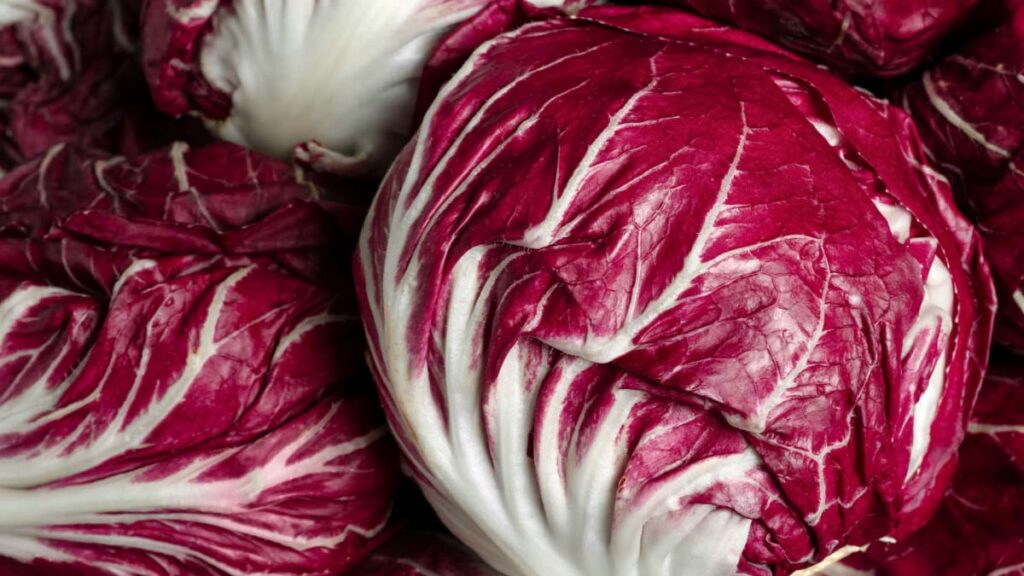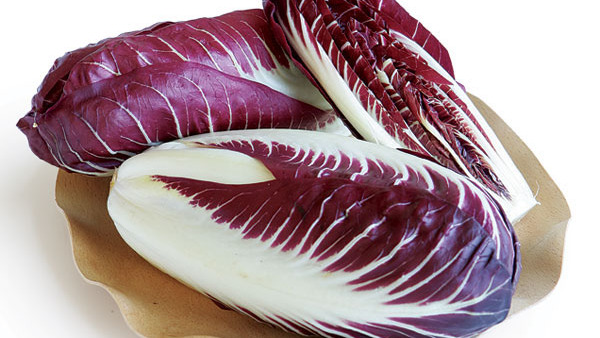If you’ve ever wandered through a farmers’ market or produce aisle and spotted a striking purple-red leafy vegetable that looks like a mini cabbage, chances are you’ve seen radicchio—also known as red chicory.
This bitter-tasting leafy green is a staple in Italian cuisine, often tossed into salads, grilled, or sautéed. But radicchio isn’t just a feast for the eyes—it’s a powerhouse of nutrition and health benefits.
What is Radicchio?
Radicchio (Cichorium intybus) is part of the chicory family and is closely related to endive. Its signature deep red leaves with white veins give it a unique look. While it tastes bitter when raw, cooking helps mellow its flavor, revealing a slightly sweet and nutty undertone.
Nutritional Profile
Radicchio is low in calories but packed with valuable nutrients. A cup (about 40g) of raw radicchio provides:
- Fiber – supports digestion and gut health
- Vitamin K – essential for bone strength and blood clotting
- Vitamin C – a powerful antioxidant that boosts immunity
- Folate – important for cell health and energy metabolism
- Potassium – helps regulate blood pressure
- Antioxidants – including anthocyanins (the pigments responsible for its red color)
Health Benefits of Radicchio
1. Supports Heart Health
Radicchio is rich in anthocyanins, the same compounds that give blueberries and red cabbage their protective benefits. These antioxidants reduce inflammation, improve circulation, and help protect against cardiovascular disease. Its potassium content also supports healthy blood pressure levels.
2. Boosts Digestion
As a member of the chicory family, radicchio contains compounds that promote healthy digestion and act as natural prebiotics—feeding beneficial gut bacteria. Its high fiber content helps regulate bowel movements and maintain a healthy digestive tract.
3. Bone Strength and Joint Support
Thanks to its high vitamin K content, radicchio contributes to strong bones and may help reduce the risk of osteoporosis. Vitamin K also plays a role in regulating inflammation, making it a supportive food for joint health.
4. Supports Weight Management
Low in calories but high in fiber, radicchio is a filling, nutrient-dense food. It helps you feel satisfied without adding extra calories, making it an excellent choice for those looking to manage their weight naturally.
5. May Help Balance Blood Sugar
Radicchio contains compounds that may improve insulin sensitivity and help regulate blood sugar levels. Combined with its fiber, it can slow glucose absorption, making it a smart addition to meals for those mindful of blood sugar.
6. Powerful Antioxidant Protection
The deep purple hue of radicchio signals its richness in antioxidants. These compounds help combat oxidative stress, which is linked to premature aging, chronic inflammation, and certain cancers.
How to Use Radicchio in Your Diet
Radicchio’s slightly bitter flavor makes it a unique addition to many dishes. Here are a few ideas:
- Salads – Mix raw radicchio with arugula, spinach, or romaine for a colorful salad.
- Grilled or Roasted – Cooking brings out its sweetness. Try drizzling with olive oil and balsamic vinegar.
- Pasta & Risotto – Add sautéed radicchio to pasta or creamy risotto for a delicious Italian-style dish.
- Wraps & Sandwiches – Use the leaves as a colorful alternative to lettuce.

Radicchio isn’t just beautiful—it’s a nutrient-dense leafy green that brings a host of health benefits, from heart support and bone strength to digestive balance and antioxidant protection.
Whether eaten raw in a salad or roasted for a sweeter flavor, radicchio deserves a regular place on your plate.

